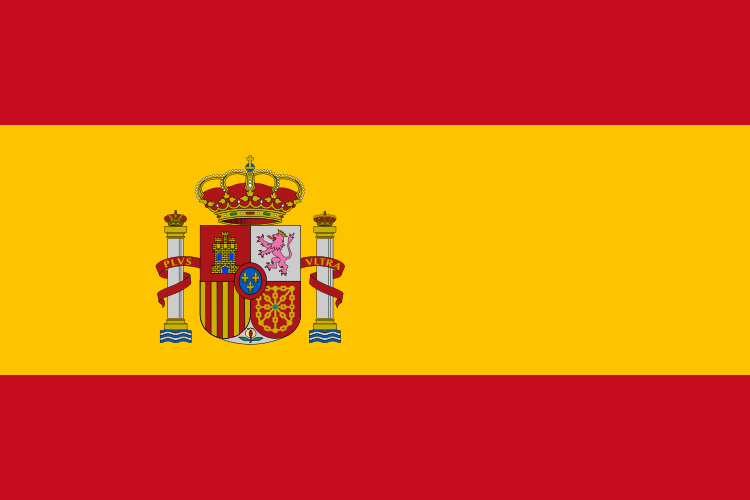Eco Sustainable Films for Flexible Packaging
Ecologically Sustainable Films for Flexible Packaging and Circular Economy
Films obtained from Renewable Plant Resources with a Short Carbon Cycle and Reduced Emissions of Climate-Changing Gases
Biocompostable Films
This section of the site deals with eco-sustainable films used for flexible packaging. In particular it describes the characteristics of a new range of ecologically designed films, the future of flexible packaging, available today. From the point of view of the sustainable development these films give a double contribution, since they are: obtained from renewable plant resources with a short carbon cycle and reduced emissions of greenhouse gases; and at the end of their life cycle they are completely bio-compostable. Eco-sustainable films described below have been identified and selected by us in 2010 and 2011. They have been included in a specific price list and have been offered to our customers since May 2012. On that occasion, the first version of this document was drawn up. In April 2017 it has been posted on the website as a separate section. All this means that our interest in these issues is not the result of the latest fashion, it is not another “green washing” operations we are witnessing today, but responds to a deep and lasting commitment, to the belief that these films fully are part of the modern concept of circular economy. They are one possible answer to the growing awareness that the development must be sustainable, and they provide a concrete and feasible solution to circular and sustainable packaging.
The Functions of Packaging and the new Eco-sustainable Films
But let’s take a step back and let’s start with packaging. The primary function of packaging is to protect and preserve the products contained herein and to allow an extended use of the products over time. This function is particularly important if the packaged product is a food. If it fulfills this function, a properly designed and configured packaging is already ecologically valid because it improves the rational use of resources and reduces their total requirements.
For example, consider a generic food product. Its useful life could be 7 days if it is not packaged and 60 days if it is protected with the right packaging. The longer duration can become the discriminating factor between consumption or non-consumption of the food (because it is no longer edible) and its disposal in landfills. The rational use of food resources is to be consumed as food, not to end up in landfills because they are damaged. In this example, with the use of the right packaging, a greater share of the available resources is destined to human consumption. The use of resources will be more rational and it will be necessary to produce less to satisfy human needs. Packaging assumes a functional contribution to ecological sustainability.
If they are designed and used correctly, present flexible packaging already fully meets these needs. But today it is possible to ask more from the packaging. Flexible packaging can contribute to ecological sustainability also during their life cycle, having an intrinsic contribution to ecological and environmental sustainability. In particular, flexible packaging can be requested to have a low environmental impact, both in terms of the raw materials used to produce it, and in the disposal phase at the end of its useful life.
Films obtained from renewable plant resources with a short carbon cycle and reduced emissions of climate-changing gases
Most of the plastic films today used for flexible packaging derive from fossil materials, especially petroleum. Oil, coal and methane gas represent the current state of ancient deposits of organic substances of vegetable origin. In ancient times the vegetation was first covered with sediments and subsequently buried by rocks, and with time and pressure it turned into fossil fuels. But targeted research and modern chemistry, correctly applied to the problem, have made significant progress in this sense and have begun to propose plastics obtained from Renewable Plant Resources. For example, plastic granules of both polyethylene and polypropylene obtained from sugar cane are now available on the market.
What is the advantage of using Renewable Plant Resources instead of fossil materials for the production of flexible packaging? The advantage is not to increase the atmosphere of climate-changing gases (gases that have a greenhouse effect), in particular carbon dioxide. Climate-altering gases (carbon dioxide, carbon monoxide, methane) are the main culprits in the global warming process of the planet that we are witnessing in recent years.
During the day, with exposure to light, the vegetation absorbs carbon dioxide, emits oxygen and retains carbon by means of the chlorophyll photosynthesis process. (In reality the process is much more complex. It starts with water and carbon dioxide and goes through glucose, cellulose and lignin. But it can be synthesized in this way). At night the cycle is reversed, but in any case the amount absorbed during the day is much greater than those emitted at night. This process is valid not only for trees, grass and vegetation but also for algae present in huge quantities in the oceans. In other words, when the vegetation grows it absorbs CO2 (carbon dioxide) from the atmosphere. When the plant dies and its components undergo biodegradation, they emit CO2, either in the form of decomposition gas (methane) or, in case of combustion, in the form of smoke (consisting mainly of water vapor, carbon dioxide and carbon monoxide).
This cycle of absorption and subsequent release has an almost zero effect on the total level of CO2 present in the atmosphere, because the carbon dioxide released into the atmosphere is equal to what was fixed by the plant with photosynthesis. It is said that the cycle is at constant atmospheric carbon, or that the cycle is CO2 neutral. Furthermore, Renewable Plant Resources have a short carbon cycle because the period between absorption (during growth) and release into the atmosphere can be measured in years, at most in decades in the case of old trees. This short cycle has been going on for a very long time on our planet, and is, by all means, ecologically compatible.
Biomaterials made from Renewable Vegetable Resources have a carbon cycle that is completely similar to that of plants. The CO2 produced at the end of the biomaterial’s life corresponds to what was absorbed by the plant from which the biomaterial was obtained. The cycle is short and there is no significant increase in the average level of CO2 (which is the main gas with climate-altering effects).
Fossil materials (oil, gas, coal), on the other hand, have stored their carbon content in ancient times through this mechanism (because they too are largely derived from plants) and have kept it buried in the bowels of the earth for millennia. If they are extracted and used as fuel (either immediately, or in incinerators at the end of the product’s life cycle) when they burn, they produce CO2. They emit additional carbon dioxide, and increase the average level in the atmosphere because the planet is unable to absorb the additional quantities and the resulting excess. The use of fossil materials therefore increases the global level of carbon dioxide. It is said that atmospheric carbon is on the rise, that there are emissions of greenhouse gases.
Furthermore, the carbon cycle from fossil materials is very long because millions of years have passed between the absorption and emission of CO2.
The dating of a substance can be verified with the carbon 14 method, a carbon isotope that decays over a fixed period. In other words, one can take any object of daily use and check the origin of its raw materials by analyzing the carbon 14 content. It is thus possible to check whether fossil raw materials (low carbon 14) have been used for its production. o Recent Renewable Plant Resources (high carbon 14).
The carbon 14 content is the method provided for by international legislation to verify the origin of the raw material and assign a grade based on the percentage found.
For these reasons, the use of raw materials of vegetable origin (rather than from fossils) in the production of flexible packaging is a green development with a reduced contribution of new carbon dioxide into the atmosphere. Currently the main raw materials used in this way derive from the cultivation of trees, corn, potatoes and sugar cane (but studies and research on lake herbs, algae and other sources are underway) and are conducted with sustainable cultivation methods and renewable.
The use of Renewable Plant Resources in the production of films for flexible packaging is ecologically sustainable because it has a reduced contribution of new carbon dioxide into the atmosphere thanks to the short carbon cycle described above. This is an important benefit when compared with the increase in atmospheric carbon resulting from the use of fossil raw materials.
Which End of Life for Plastic Packaging?
This paragraph analyzes what the end of life (the best end of life) can be for plastic, in particular for flexible plastic packaging.
Once a flexible packaging has performed its primary function (to package and protect a certain product, and in the case of a food often extend its useful life, and therefore increase the overall resources available for human nutrition), it reaches the end of its life and must be disposed of.
The possible alternatives are:
- it is left in the environment;
- it is disposed of in landfills;
- is sent to an incinerator;
- is recycled;
- it is transformed into compost.
Abandonment in the environment (littering) is definitely the worst of all. In a Civilized Country, people do not throw waste on the street, in the fields or in the gardens, on the beaches, in the rivers, or in the sea.
Unfortunately, in all evidence, we are not in a Civilized World. Where I come from it is now rare to find rude people who dirty, or throw the garbage bag on the street. But if we look around we realize that this behavior does not only occur in the Third World, or in underdeveloped countries.
From an environmental point of view, abandoned waste is the worst case scenario. In addition to dirtying the place where it is thrown, it also has a very long residual life.
Plastic films in particular, if exposed to sunlight and atmospheric elements over time tend to break up progressively, and to become smaller and smaller particles, until they become micro plastics. A disaster.
However, since no refusal has legs, and not even a herd of lemmings (which periodically commit suicide in the ocean), it is clear that uncontrolled abandonment is not a problem of rejection, but of rudeness of us humans. The solution is not to eliminate plastic, but to educate the hounds.
Disposing in landfills solves the phenomenon of littering, it does not smear the pink beach of Budelli in the archipelago of La Maddalena, the Forcella Rossa in Tofana, or the ditch behind the house.
It is a little bit better, but it does not change the end of life of plastic that much, perhaps it makes it worse. The plastic is buried along with the other garbage and therefore does not shatter. The advantage is obviously that the garbage is confined to one place, and therefore “pollutes less”. But landfills create miasma and stench, attract mice, beetles, flies and seagulls. Nobody wants them near his house. Eventually they run out: no matter how big the hole, the quarry, the cave used for the landfill. Sooner or later fills up, and you have to find another one.
There is a very strong debate in Italy regarding incinerators.
Here one takes sides neither in favor of the critics, nor in favor of the proponents. If the incinerator is properly designed and managed it should not create harmful or smelly emissions, it should recover the energy produced by combustion and dispose of the garbage.
But any combustion always generates at least climate-altering gases: carbon dioxide and carbon monoxide. We remove garbage today from the face of the earth and contribute to greenhouse gas emissions, with the consequent warming of the climate tomorrow.
At a guess it’s not a nice trade-off.
Recycling is certainly the best option, compared to the others just described.
Some materials are infinitely recyclable: metals and glass. For plastic, things are slightly different.
Here the key question is: “how many times can it be recycled?”
First of all, not all plastics are recyclable, we must distinguish between thermoplastics and thermosetting plastics. Then they must be monomaterial, because if they are made of more polymers, recycling is problematic. Furthermore, the mechanical recycling process has well-defined rules, which must be respected by all the actors involved: producers of plastic objects, consumers-users, collection circuits, recyclers. To produce an article in thermoplastic material, we start from a virgin granule. This is melted and brought to the required shape (film, tub, bucket, garden chair, petrol tank).
In mechanical recycling, these articles at the end of their life are ground, transformed again into granules, and the proceeds can be melted again. But the process is not infinite. At each cycle the plastic degrades a little, and the recycled material must then be used in less “noble” applications.
For example, the writer believes that it is highly dangerous to use recycled plastics for materials or objects that must come into contact with food. (If you are interested please contact us and we will argue this statement).
Aside from that, there are plenty of uses for recycled plastics. But the point is another: sooner or later any recycled plastic object must be disposed of permanently, and at that point the possible options remain the three described above.
An example can clarify the concept. Suppose that, about twenty years ago, virgin polypropylene was transformed into transparent film. The film was used to package food, say spaghetti, half-pens, rigatoni. Dry food pasta has a very long shelf life, and the packaging contributes significantly to the shelf life. Let’s say that after a year pasta has been eated.
The packaging was not printed, and the recycling circuit was particularly virtuous and managed to keep transparent materials separate from colored ones.
Nevertheless, the recycled granule obtained cannot be used for food contact, nor to manufacture transparent products. In fact, a very low percentage of colored material is enough to darken a transparent object in an unacceptable way.
To remedy this, a white coloring granule (masterbatch) and plasticizers were added, and a white bottle was produced, for example to contain shampoo or liquid detergent.
Even the bottle for a year performs its function of containing and preserving the liquid detergent. Once emptied it must be disposed of again. The housewife is conscientious, she rinses it well, and puts it in the recycling of plastic. Also this time the recycling is very virtuous, but at this point the granule is greyish tending to yellow, and must be further darkened to be transformed into an acceptable article. Green masterbatches, other additives and plasticizers are added, and garden chairs are produced, which end up on the terrace of the house by the sea.
These last for about twenty years: they take the sun, rain, snow, wind, salt, a few frosts, a few grains of hail, but they resist. Then a clumsy user places his (sweet?) Weight on the chair “not very gently” and the chair decides that when it is too much it is too much and crashes. Fortunately, the victim does not get hurt. At that point the chairs became decidedly ugly, due to exposure to the elements. But they are, above all, dangerous, and are thrown away again.
And we have arrived at today’s times. Once again they end up in the plastic circuit, but at this point even the best circuit, the best mechanical recycling technology struggles to obtain further reusable granules. In this plastic there is too much stuff, heterogeneous, unknown and unidentifiable. Maybe you can even make another round of the merry-go-round for recycling recycling recycling, in an even poorer, less performing application. But it is evident that at some point we will arrive at the redde rationem.
Currently, what cannot be recycled ends up either in landfills, or as fuel for some thermal process.
And we therefore return to scenarios two and three described above. So back to the original question, or, to paraphrase Bob Dylan:
How many times must the cannonballs fly,
before they’re forever banned?
How many times can plastic be recycled, before ending up in the incinerator? Since the answer to this question does not go away with the wind, at this point there are two solutions:
- or someone invents a method to use recycled plastic to make eternal monuments,
- or at the end of the cycle it must be destroyed (and probably incinerated).
But personally I have many doubts that Renzo Piano, Norman Foster, Massimiliano Fucsas, Tadao Ando and their clients are willing to build a new Colosseum, a new Pyramid in recycled plastic.
For the sake of completeness, consider that the criticism made here of recycling does not come from someone who does not practice it, on the contrary. In the company, most of the waste materials (95%, maybe 98%?) Have been sent for plastic recycling for at least 40 years.
In addition, for products intended for flexible packaging, we have recyclable plastic solutions available for almost all applications, (including barrier films for modified atmosphere or vacuum, with gas and aroma barrier, with light barrier).
Finally, on printed films it has been our practice, for a long time, to clearly identify the plastic and provide the consumer with indications for correct transfer to the recycling circuit. And for this reason, perhaps, for the fact that we have been in the circuit for so long, that we also see its limits.
We therefore arrive at the fifth scenario, included in the list above: transformation into compost. For flexible packaging, biocompostability is, in our opinion, the best end of life.
Fully Biocompostable Films at the End of Life Cycle
Unfortunately, there is currently a lot of confusion about what can happen to a particular product at the end of its useful life.
The term biodegradable is often used, and this term is associated with an “ecological” end of life of the product. In reality it is necessary to distinguish between biodegradability and biocompostability.
We begin to clarify if we split the term into two components: “bio” and “degradable”. The first term “bio” means that the product, through a biological (therefore natural) process, is transformed into something else. “Degradable” on the other hand means that the product is precisely degraded into something else. But in what? The term does not specify it.
Plastic materials are often made up of polymers, i.e. very long chains of molecules linked to each other. Recently, films defined as biodegradable have been placed on the market.
Sometimes these are traditional plastic materials in which at a certain point in the chain of molecules a component has been added that over time (or exposure to light) breaks the bonds between the molecules and breaks the polymer chain. In particular, we are talking about oxodegradable plastics if the additive is sensitive to oxygen.
The result is that over time the film shatters into extremely small pieces. In this case, therefore, the degradation of the material has transformed a tiny dust film that is actually just as polluting for the environment (if not more so – microplastics) than the original film. This is a physical transformation, a process of breaking and shredding the film, but the chemical nature of the material remains unaffected.
This is a distortion of the concept of biodegradability and responds to purely commercial criteria rather than real ecological dictates.
Biocompostability is a completely different process. To understand this, consider the household waste that is currently collected in the wet (fruit peels, vegetables, remains of meat, food, bread). Once placed in the domestic composting plant, in the industrial composting plant, or in the dunghill of old farms, these waste are attacked by natural organisms (enzymes and bacteria) and are naturally transformed into the basic organic components. In other words, they undergo a natural biological-chemical transformation that transforms them into compost that can be safely used as fertilizer for vegetable gardens, plants and gardens.
Therefore the term “biocompostable” is much more precise and indicative of what happens: through a biological process the material is transformed into compost.
A Bio Compostable film behaves in exactly the same way. When it is placed in the compostator (industrial or domestic) and exposed to suitable conditions of humidity and temperature, it undergoes degradation due to the action of specific enzymes which involves the modification of the chemical compound (with the release of water, CO2, methane and heat).
The biocomposting process can be carried out in two different ways: industrial composting and home composting.
Industrial composting is carried out by specialized garbage companies that collect wet waste (appropriately selected by each consumer at home) and treat it in special industrial plants. In industrial plants the operating conditions (humidity, temperature, time, presence of enzymes and bacteria that attack the material and transform it into compost) are strictly controlled and therefore the biocomposting process is always effective. In particular, the process temperatures are generally quite high (55 – 60 ° C) and constant, and these conditions favor biocomposting.
Domestic composting, on the other hand, is carried out at home by each consumer, who introduces the wet waste in a special “biodigester” (the green plastic bin). Operating conditions are not strictly controlled, generally the temperatures inside the biodigester are significantly lower and often vary with the season, and therefore biocomposting may not be perfect.
In summary, treating waste in industrial plants is simpler and more effective than doing it in domestic composting. For these reasons it is necessary to specify in which operating conditions the film is biocomposable.
The specific regulations governing biocompostability have considered two situations:
- the insertion of the material in industrial biocompostators (these are the centralized plants, in consortium with the Municipalities, which currently collect and treat most of the domestic wet waste);
- the use of domestic composters (those particular containers that can be kept at home, or rather in the garden).
In particular, two regulations governing industrial composting have been issued, one European (EN 13432) and one American (ASTM D 6400).
Domestic composting is instead regulated by a voluntary procedure originally developed by the Belgian Certification Company AIB-Vincotte, and now owned by the Certification Company TUV Austria.
Generally, to meet these regulations within 3 months of insertion in the composting regulations, 90% of the biocomposable material must be bio-composed, that is, completely transformed into humus that can be assimilated by plants according to the main processes (anaerobic digestion, industrial or domestic composting).
Today there are films for biocompostable flexible packaging, which have the biocompostability certification if inserted in industrial composting plants according to the European (EN 13432) and American (ASTM D 6400) standards, or domestic according to the “OK Compost Home” procedure of the TUV Austria.
It is important to note that decomposition does not take place as long as the film is stored in a reel, in a cool and dry environment, and not even during the period in which it constitutes the packaging of the product to be packaged, but only begins when it is inserted with the rest. of wet waste and therefore exposed to humidity, temperature and the action of enzymes and bacteria.
The use of Bio Compostable films in the production of films for flexible packaging is ecologically sustainable because it avoids disposal in incinerators or landfills.
At the end of the packaging life cycle, the Bio Compostable film is naturally transformed into compost.
And if renewable plant resources have been used to produce it, the cycle ends: we started from nature, the film played the very important function of packaging (protecting the food and extending its useful life) and in the end it is transformed into compost and returns. therefore to nature. A perfect example of Circular Economy.
Eco-Sustainable Films and Circular Economy
This explains the meaning of the title of this web page. Today, films for flexible packaging of this type are available, which in addition to the functional content given by the protection of the product and the consequent rational use of food resources have a double intrinsic contribution of eco-sustainability and low environmental impact and respond to the dictates of the circular economy:
- with the use of Renewable Plant Resources for the raw material there is an almost zero impact in the emission of greenhouse gases, in particular in the emission of CO2 and a virtuous cycle with constant atmospheric carbon is established. In fact, the carbon dioxide resulting from the combustion or decomposition of the film at the end of the cycle was previously compensated for by the carbon dioxide absorbed by the plant substance during its growth;
- Bio Compostability prevents disposal in incinerators or landfills. At the end of the packaging life cycle, the Bio Compostable film is naturally transformed into compost.
These eco-sustainable films therefore fully fall within the modern concept of circular economy:
- starting from renewable natural resources,
- they perform the function of packaging (especially for food products: they preserve their freshness, increase their useful life, thus reducing the waste of food resources);
- and finally they return to nature in the form of compost.
The virtuous circle is completed and closed, and along the way the process has concretely contributed to meeting human needs and increasing the added value for all the players involved: food producers, consumers, and the environment.
The Eco-sustainable Flexible Packaging Films currently available
What are the films (for flexible packaging, but also for other uses) that currently meet these criteria? Research is working hard on these topics, it is very likely that in the near future new materials and / or processes will be invented. But in our opinion there are already possible solutions for eco-sustainable packaging. The flexible films that can be used in packaging machines are:
- biocompostable Cellofan, obtained from cellulose from forests managed with ecological criteria, and available in different variants (transparent, white, metallized). A peculiar feature of Cellofan is that it has an excellent barrier to oxygen and aromas. Depending on the type of lacquer used, you can then have different types of films with different degrees of moisture barrier. In the page Biocompostable Cellofan from Renewable Plant Resources in Reels you can find more details of the biocompostable Cellofan;
- biocompostable PLA film, (Poly Lactic Acid). Chemically, PLA is a variant of polyester, but it is obtained from starches (in particular from corn starch and sugar cane). It has excellent mechanical characteristics, excellent sealability and slipperiness characteristics on packaging machines. But the gas barrier (oxygen, humidity, aromas) is generally quite limited. Also PLA is available in different variants (transparent, white, metallic). More information in Biocompostable PLA Film from Renewable Plant Resources in Reels
Biocompostable Printed Films
Films described above can be printed and thus obtain printed bio-compostable films.
It is printed to customize the packaging with captivating graphics, or with simple writings, and / or with a QR Code that refers to a web page, which clearly identify the material, to make consumers appreciate the choice of this eco-sustainable alternative. product packaging.
The flexography printing process is completely similar to what is usually done on normal plastic films, there are no particular problems. Excellent graphic results can therefore be obtained (four-color process, line work, Pantone colors, excellent white coverage, etc.). On the page Our skills: flexo printing of our site you will find some of the characteristics of flexo printing.
There are two precautions to observe:
- special biocompostable inks must be used;
- the dry content of the ink must respect precise limits. The dry residue (of each ink, and of the sum of all the inks) must be lower than certain predetermined ratios (1% of the weight of the material for the single color, and 5% of the weight of the material for the sum of all the inks).
Starting from the digital files of the graphics, our printed film estimation program automatically calculates the opacity of each ink and the total opacity, as well as the weight of the dry ink that remains on the film, (of each ink and the total) and the ratio (the percentage) between the weight of the single package and the weight of the inks.
It is therefore possible to verify in advance that a certain graphic complies with the requirements of point 2 above to obtain biocompostability. To confirm that the theoretical data are correct, a test is then performed with a precision laboratory balance that weighs the film and the total ink content.
However, in order to freely use the compostability symbols, the printed films thus obtained must be sent to a Certifying Body, which will carry out all the biocompostability analyzes and tests on the film and will issue a specific Biocompostability Certificate for each printed packaging. The process is not fast, and it is also quite expensive, but with the Printed Certification the circle closes, the eco-sustainability policy undertaken with the choice to use eco-sustainable films is completed.
Laminated Biocompostable Films
Finally, starting from bio-compostable films, it is also possible to obtain bio-compostable laminated films, based on bio-compostable films, made using special adhesives which are themselves bio-compostable.
The laminates can also be printed with the precautions described above for printed films. On the Our Skills: Coupling page of our site you will find more information on coupled films. Also in this case, however, to obtain the biocompostability certification of the specific film it is necessary to send the coupled film to a Certifying Body.
For further infomations write, phone, send an email at:
A. Peruzza S.r.l. – via Portelle 1 – 31010 Mareno di Piave – Tv – Italia
Telefono: (int+ 39) 0438 492335. Telefax: (int+ 39) 0438 492365
Email: info@aperuzza.com
© 2012-2022 A.Peruzza S.r.l. is the sole owner or authorised user of the intellectual property rights relating to the information communicated herein. It is forbidden to copy, include in websites, distribute or anyhow publicize this document to third parties without prior written permission of the owner.


























